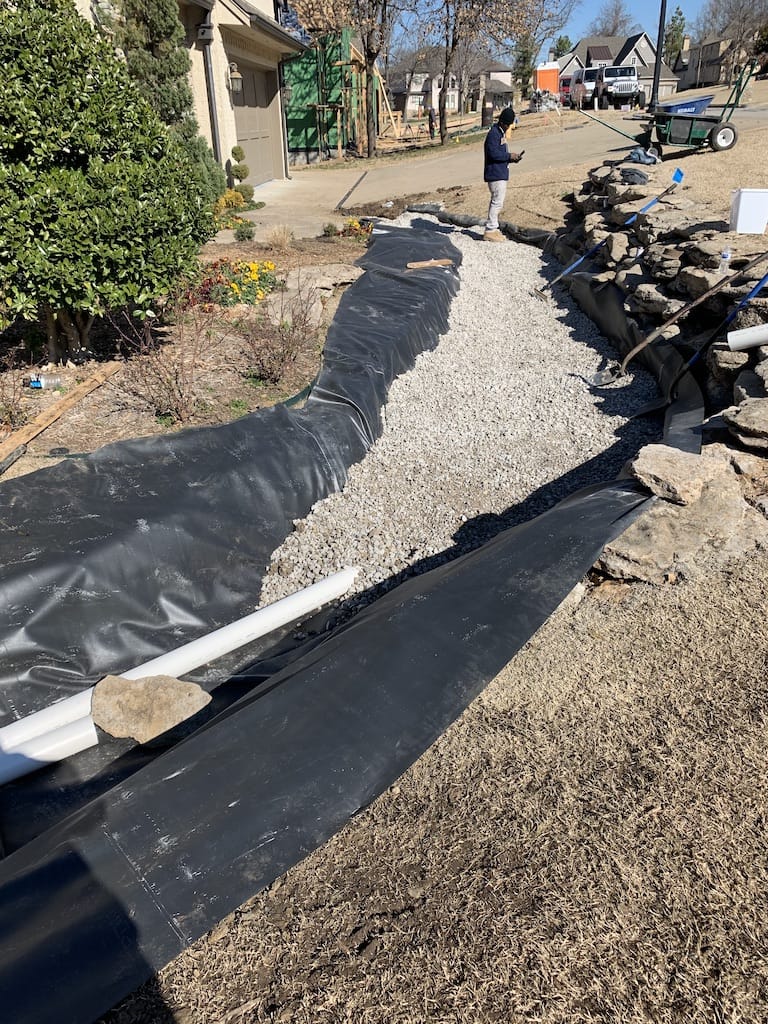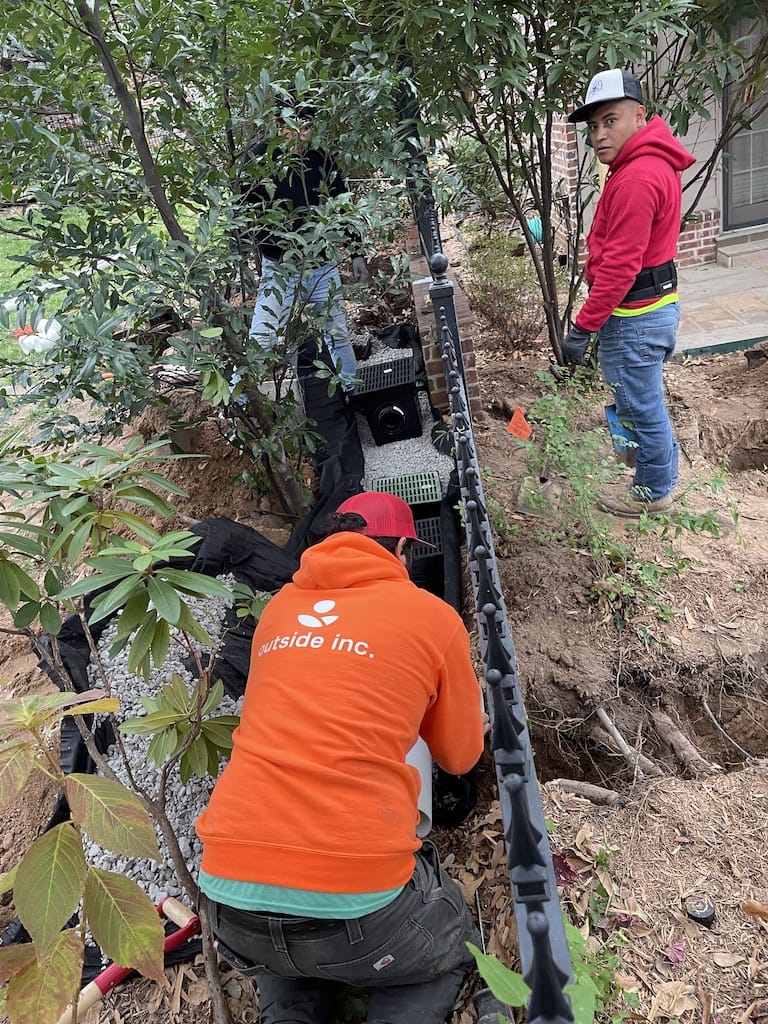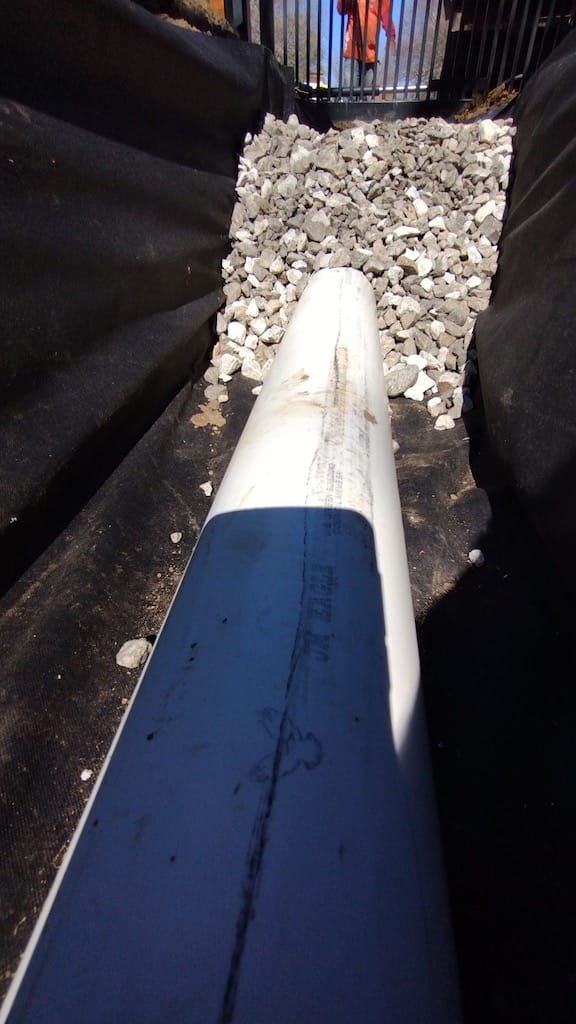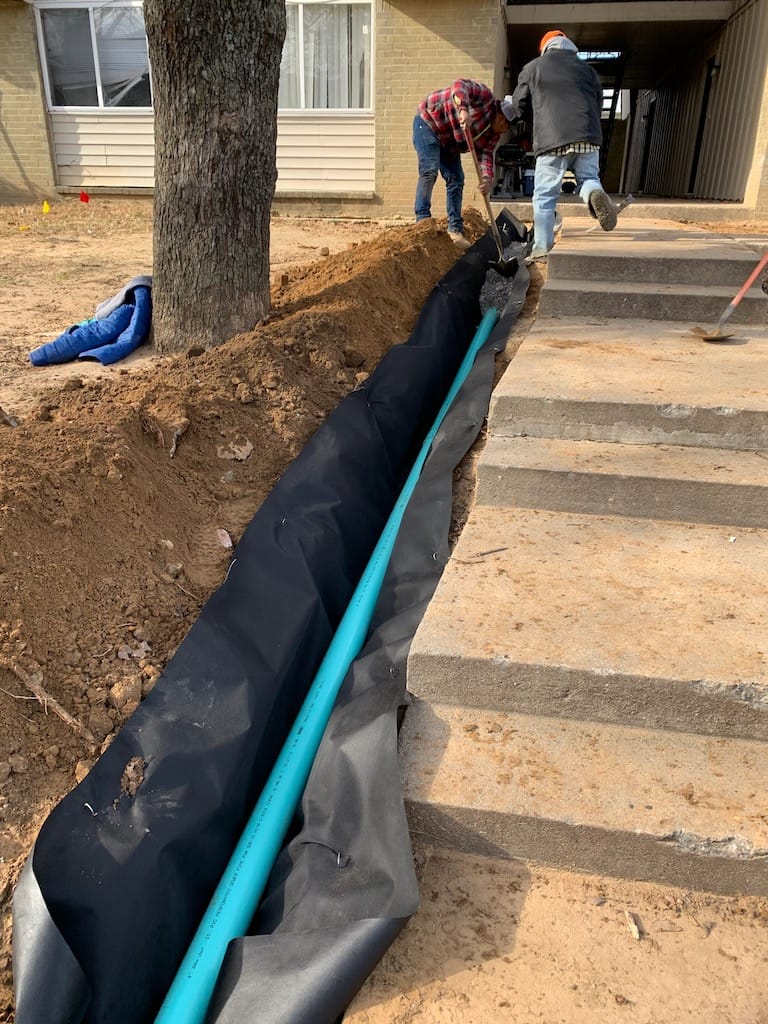French Drains
French Drains,
What’s the deal with the water standing in the yard??? Have you ever heard that from your husband, wife, friend, neighbor, boyfriend, mother in law or the kids? Sometimes here in Oklahoma we get some good gully washers! It seems like there is standing water on the side of the hills! I’m getting off the subject now. If you have low areas in the front, back, or the side of the house that never seems to get dry, or always stays wet, then a French drain Tulsa would most likely solve your problem. I’ve encountered a lot of people who think that the pipe going from your gutters to a pop-up or out to the street is a french drain. They are incorrect. That is simply a pipe being used as an extension of your gutters. I would like to hopefully educate you on the difference between the two because they are both extremely important in their own way!
We’re going to cover the 5 W’s and an H! Who, what, when, where, why and how.
Who needs a french drain?
Standing water in your yard? Do you have a yard that just never dries up or is always mushy? Is there water in your basement? Does the side of the house have cracks? Is the dirt washing away from the footings and you are starting to see the footings? Is there water in the crawl space? Do the Piers under the house have water setting beside them? Is the retaining wall falling out because there is too much water pressure behind it with no outlet for the water? There are multiple things where you could and would need one. Mainly do you have water standing that needs to be removed from your yard so you can enjoy it?

What is a french drain?
Per WikipediA – A French drain Tulsa or weeping tile is a trench filled with gravel or rock, or both (also called: trench drain, filter drain, blind drain, rubble drain, rock drain, drain tile, perimeter drain, land drain, french ditch, subsurface drain, subsoil drain, or agricultural drain, I’m pretty sure I’ve only used a couple of those verbiages). We like to use 1” Class A. washed gravel. Class A means the rock quarry or nursery has washed and separated the dust and small rocks that could get inside the pipe. This will also contain a perforated pipe that redirects surface water and groundwater away from an area. We recommend PVC since it has a smooth inside to help prevent clogging! ADS pipe can also be used but not recommended due to the non maintenance aspect. Once it’s clogged then you will be replacing it, which will lead to unnecessary expenses.
French drains are primarily used to prevent ground and surface water from penetrating or damaging building foundations and as an alternative to open ditches or storm sewers for streets and highways. Alternatively, French drain Tulsa may be used to distribute water, such as a septic drain field at the outlet of a typical septic tank sewage treatment system. French drains are also used behind retaining walls to relieve ground water pressure.
(I feel like WikipediA nailed it on the head on this one).
Our typical french drains are 12” to 24” deeps and 1’ to 2’ wide. All depending on the lay of the land and what we are trying to accomplish. We will need a place to discharge the water also. Once the trench is dug you place fabric into the bottom and up each side. Keeping in mind that you still have to cover the top. Next we add a layer of rock, using the rock to slope the PVC (pipe with holes) ever so slightly toward your discharge. The more you’re able to slope the pipe the faster you can drain the problem area. Even if your pipe is perfectly flat it will still drain the problem area. Just takes a little longer. Water will always take the path of least resistance. Then we finish filling the trough up with clean rock leaving about 2”-3” from the top. Then we overlap and wrap the fabric on top to prevent any dirt from getting into the French drain Tulsa. Then we will top the trench with dirt and sod or with gravel. It all depends on the location and the amount of water we are having in the trouble area.



When should you install a french drain?
As soon as you are able! You will notice your problem is more prevalent during the wet season. We can install them during any season but the best time would be before or after the wet season. Installing them during the wet season just makes for more ruts and bigger chunks of dirt. But maybe your place is never dry. Then this is where this will apply. Pretty much the final clean up is difficult. Our biggest goal is to make it look like we were never there! We strive for excellence and ultimately your satisfaction.
Where should you install a french drain?
Most homeowners and some shady contractors think you need to install a french drain around the whole area. This is simply not true and not a good thing for the homeowner. Installing a normal non perforated drain pipe between French drain Tulsa areas is cheaper per foot for the owner. One easy way to tell where you need a french drain is to go into your property after a couple of those good spring rain days and ask yourself, Is there standing water the next day? Are there any mushy spots after a week since the last rain? Is there bare dirt showing where there used to be grass? These are all good indications that you may be in need of some type of draining system.
Why should you install a french drain?
The Grand Canyon!!!! The Grand Canyon was made due to a mass amount of water! Not saying that your property will become the next national tourist site for 1.6 million people a year, but water does destroy and create cavities! It will get into anything that gives it a chance. If you see signs of water setting for days it could be the reason you need a French drain Tulsa! It’s never going to fix itself. It’s just going to continue to get worse until it gets addressed!
How to install a french drain.
Installation of a French drain Tulsa is a pretty simple mind set. Create a void in the ground. Fill the void with rocks to create an area with less ground presser so the water will go to it. Have a pipe with holes so the water is able to get into the pipe. Pipe is sloped away from the problem area and points to the neighbors yard ( I’m kidding! ) . The most difficult of all this for most homeowners is digging up the dirt (which in Oklahoma it’s mostly Clay) and then finding a way to get rid of it. I’m not at all saying this can not be done by the DIY homeowner. What I am saying is we are set up to get in and out in a couple days on most french drains and you can hardly tell we’ve even been there.
I hope this information has helped you with understanding the importance of getting water away for one of the greatest investments that most people make in their lifetime.
